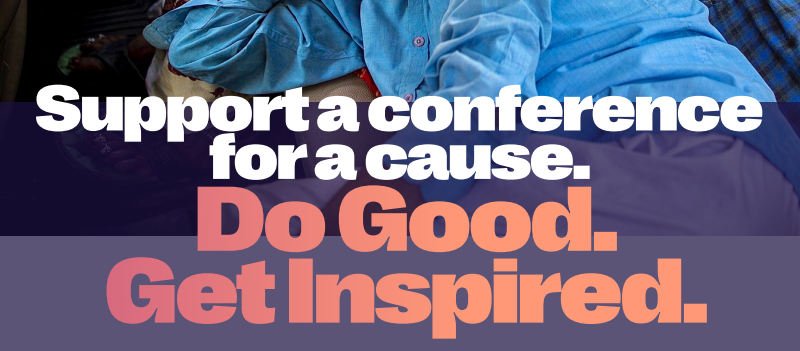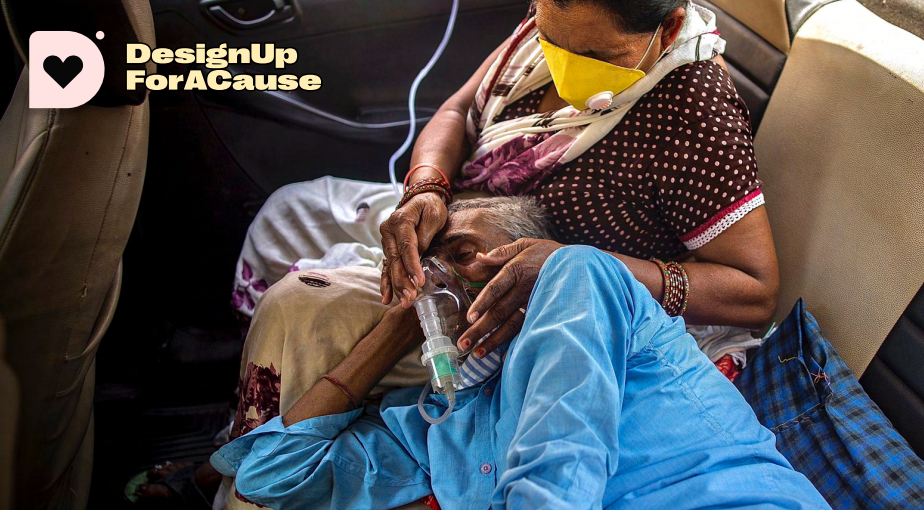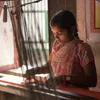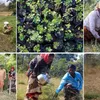Preethi Gopinath is the Associate Professor and Founding Director of the Textiles MFA programme at Parsons, The New School in New York. She was earlier the founding faculty member at Srishti School of Art, Design, and Technology in Bengaluru.
With over 25 years of international experience in both industry and academia, she is also a Bharatanatyam dancer and a philosopher. Her work includes collaboration with textile makers, engineers, and biomedical device designers to integrate technology and new materials with traditional textiles crafts. Preethi will also be speaking at the DesignUp 2021 conference this month.
This year, the DesignUp 2021 conference team’s response to India’s apocalyptic second wave of the COVID-19 pandemic is to organise a virtual fundraising drive along with the stellar lineup of speakers. To be held on the weekends of June 11-20, 100 percent of donations will go to charities bringing much-needed relief to rural India, in the form of dry rations, oxygen concentrators, and health centre wards.
As media partner for the conference series, see YourStory’s coverage of DesignUp’s earlier online panels in 2020, May the Fourth be with you and The pandemic’s impact on design. See also our write-ups on the annual DesignUp conference editions from 2019, 2018 and 2017, and our d-Zen (‘Design Zen’) section for more design resources.

Preethi Gopinath joins us in this interview on designer resilience during the pandemic, academia-industry collaboration for education, and opportunities for the Indian textile sector.
Edited excerpts from the interview:
YourStory [YS]: What are the key challenges facing designers in these grim times, and how can they be overcome?
Preethi Gopinath [PG]: Designers need to resist falling into despair and remember that we can be a conscious force for good.
We have skills that enable us to be resourceful and to have insight, and develop creative solutions to the problems emerging from the crisis. We are trained to see, listen, observe, and then apply our creativity to challenging problems.
Designers are by nature and training creative solution developers. It is important to see things as they are and be present to opportunities to serve in any way possible - for the greater good. Staying connected to community and caring - not descending into apathy or cynicism - will help us keep our eye on what is important.

[YS]: What are some outstanding examples you have seen of effective design during the pandemic?
[PG]: I have seen some outstanding examples of creativity and design developed by my students in the last year. My MFA Textiles students at Parsons persevered through the pandemic with city lockdowns and campus closures, and developed some incredible textiles in their bedrooms.
All of them were handcrafted and conceptually strong - addressing societal issues of sustainability, craft preservation, and wellbeing. They demonstrated resourcefulness and resilience.
For example, Jing Li spun her own yarns incorporating shredded old garments, moss, and hair to create large sculptures that referenced death, regeneration, and growth. Another student, Erin McQuarrie, wove a giant lyrical tapestry as an ode to connectedness and love. Shradha Kochhar knitted family and self-portraits and built an installation to acknowledge a nurturing community and to create sustainable systems - all from Kala cotton yarn handspun on charkha.
Layla Klinger combined technology and hand craft in several ways to create a giant installation using a traditional Bobbin lace technique with electroluminescent (EL) wire. She reimagined a traditional craft in a 21st century context, also addressing issues of Queer space and craft preservation.
Uyen Tran cooked up some exquisite bioplastics from chitosan (waste from the seafood/shellfish) that can be used as substitutes for leather and plastics in the fashion industry. These works are now on view at the show Emerging Fibres at Donna Karan's Urban Zen in NYC.
On a completely different note, I watched New York design effective systems to vaccinate its residents, run the public transit system during the pandemic, and teachers everywhere devise new pedagogical systems to teach students online.
[YS]: What are some notable projects or research initiatives you are currently engaged in?
[PG]: My practice has been in the areas of traditional textile/material technologies and production, and the application of technology to create new designs for fabrication. So, my research builds on historical textile making processes and materials, as well as modern scientific advancements in material technology.
My current research interest lies at the intersection of craft techniques (weaving, knitting, crochet, braiding, etc.), bio-materials, hi-tech materials, and making, where fabric science meets traditional textiles. I am exploring and investigating traditional fabrication techniques and fibres for potential application in the areas of biomedical uses, geo-textiles, interior furnishings and architectural structures.
Recently, I collaborated with engineers and techies who are developing a medical device involving smart textiles to monitor blood oxygen levels.

[YS]: What are the success factors for good designers to become good design managers?
[PG]: Good design managers need people skills, organisational skills, a clear understanding of processes, and a large view. Empathy, time management, and the ability to lead and communicate are important for good design managers.
Not all good designers are naturally good design managers, nor do they need to be.
[YS]: What are three core skill sets or mindsets that designers need in the uncertain post-pandemic world?
[PG]: Resilience, the ability to be nimble and to adapt, keen observation, insight, empathy, the willingness to embrace change and the unknown (that’s more than three!).
[YS]: What are the leadership opportunities for designers in a world where inclusion and environmental sustainability are becoming key concerns?
[PG]: The top skills of a designer include conducting research, gathering information, making connections, thinking outside the proverbial box and then applying creativity and design skills to innovating solutions.
From fashion supply chains to retail inventory management, and craft to high tech, it is important that designers take the lead in areas where sustainability issues are often paid lip service or ‘greenwashed’.
The craft sector offers several opportunities for finding solutions that could serve the bigger industrial production processes. Designers also can lead the way in sounding the alarm and communicating effectively the need for inclusion and environmental sustainability globally as well as locally.

[YS]: What are some of the unique advantages India has in the textile sector, what are the challenges, and how can they be overcome?
[PG]: The advantages are legacy of textiles craft traditions and a vibrant textile industry, science and technology, brilliant minds, and outstanding craftsmanship. But there are also challenges, such as undervaluing the craft, the craftspeople, and their creativity.
Systemic change is needed to elevate the value of labour, capital investment in the craft sector, and marketing/ rebranding of textiles to bring about radical change of value in the mindset of the consumer and the producers. The value of fibre has to be re-established. Caring for fibre cultivation – plant and animal – can be a tremendous drain on our natural resources.
A new hybrid model needs to be created so that technology can inform crafts and crafts can inform industry. Craft is the way that we can retain the humanity in our evolving technological world.
[YS]: What are the ways in which industry and academia can collaborate to improve design education? What is your involvement in this space?
[PG]: Industry and academia need to feed, encourage, and support each other. Industry needs to invest in education financially and offer incubator spaces for design to thrive, and academia needs to work closely with industry to support them with radical new ideas for advancing sustainable production, new materials and circular systems.
I have worked in the industry and in education for 25+ years and am attuned to the needs and challenges of the industry, while seeing the limitations of purely academic thinking. Education is where blue sky thinking and radical, creative experimentation happens with young minds generating brilliant new concepts and prototypes.
Mentorship from the industry and the creation of pathways for new thought and design practices generated in the education space to be adapted quickly by industry will create a win-win situation for both.
At Parsons, our students are exposed to the industry through client projects and externship courses, while people in the industry and professionals in the field present their work to our students and engage in deep meaningful conversations about sustainability and social justice.

[YS]: Looking back at your decades of experience in design space, what are some notable shifts or trends you are seeing in the field?
[PG]:
- Underpinnings of sustainable design are visible in most design solutions
- New circular design models
- Leap from the hand to technology as a design tool
- Exponential increase in speed of multiple creating design options and presentations
- The extreme shrinking of lead times from concept to product delivery.
[YS]: What are some daily habits of yours that you think help in strengthening your design sensibilities?
[PG]: Being still and meditating, studying philosophy and history along with current advances in technology, staying curious, and being open to new things and aware about the world we live in.
[YS]: From your reading list, what are three good books about design you would recommend for the “non-designers” out there?
[PG]:
The Design of Everyday Things by Don Norman
Active Matter by Skylar Tibbits
The Sense of Order: A Study in the Psychology of Decorative Art by G.H. Gombrich

[YS]: What are your three tips or parting words of advice for the aspiring designers in our audience?
[PG]:
- Be curious/interested and don't give up your sense of wonder.
- Learning and discovery also involve "making mistakes", "failing", "getting things wrong", "starting over", and "not knowing". Embrace the process and from time to time, rest in the unknowing. That is an opportunity to learn something. Socrates said it was better to be proven wrong than to have ignorance in your soul.
- Work with integrity. As Oscar Wilde said, "Be yourself, everyone else is already taken".
[YS]: Any other comments or remarks you would like to make?
[PG]: Design by definition is meaningful and purposeful. We get to create, generate, and ideate. The world is ready for a Renaissance 2.0. Our time is now.
I will share what I tell all my students on Graduation Day as they step into the world outside academia: "Be kind, be true, be of service, be you!"
Edited by Megha Reddy
Link : https://yourstory.com/2021/06/designup-2021-preethi-gopinath
Author :- Madanmohan Rao ( )
June 08, 2021 at 01:00PM
YourStory



